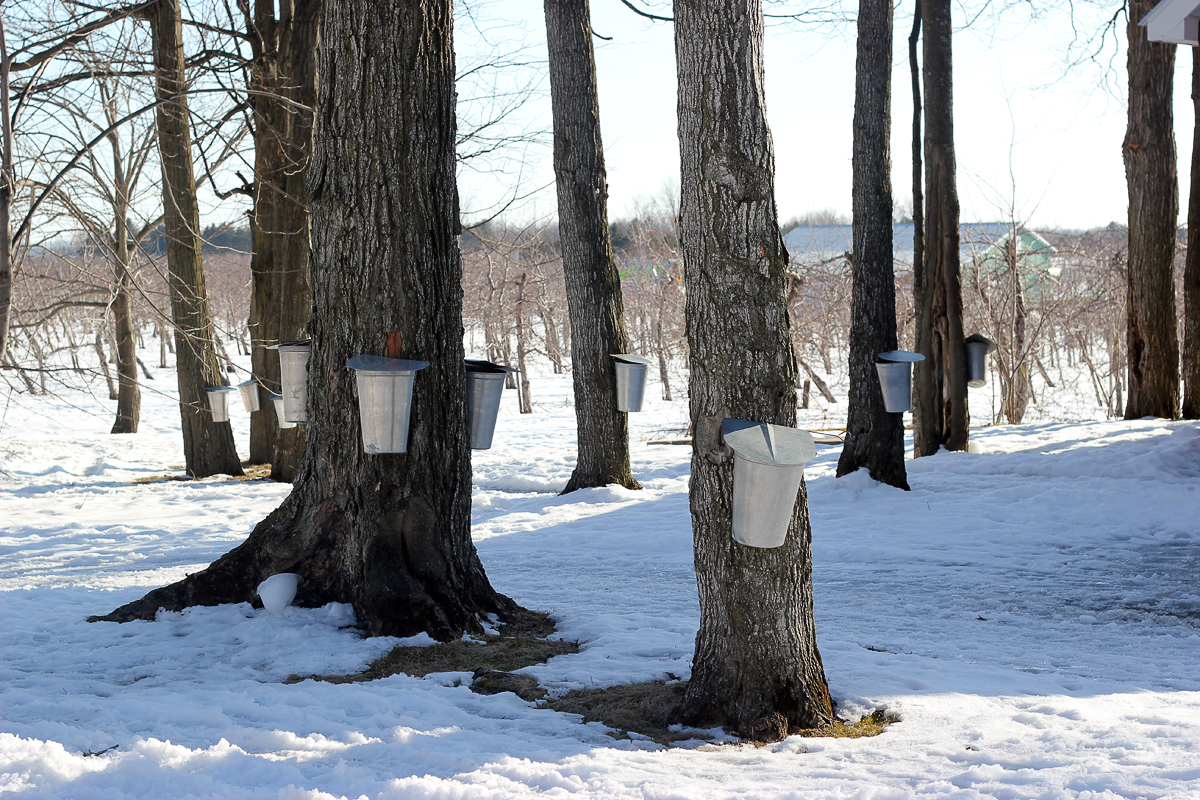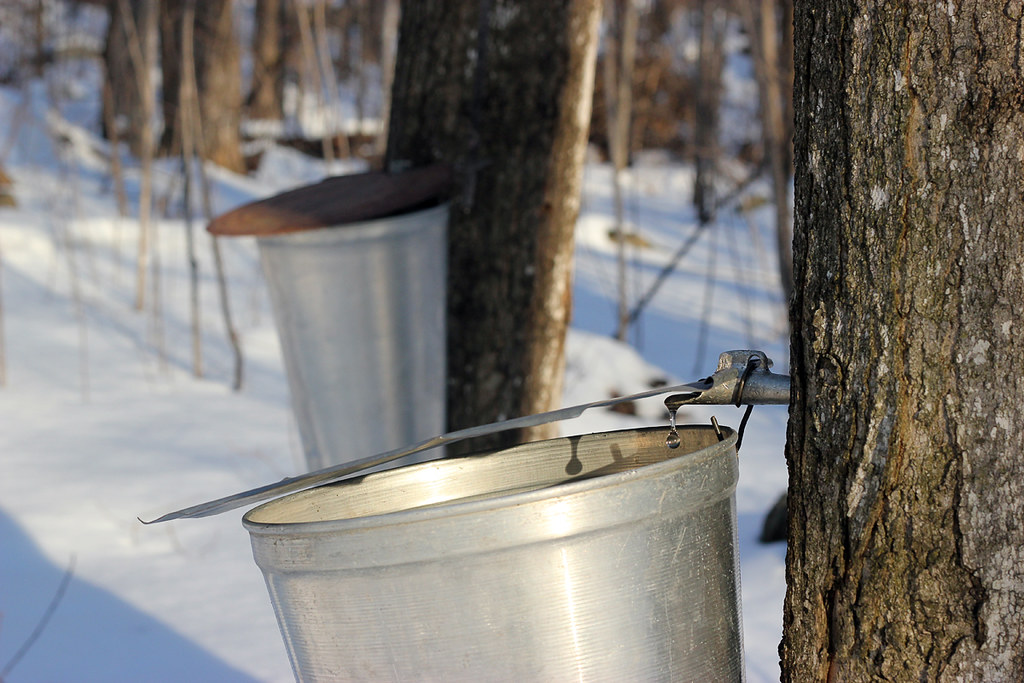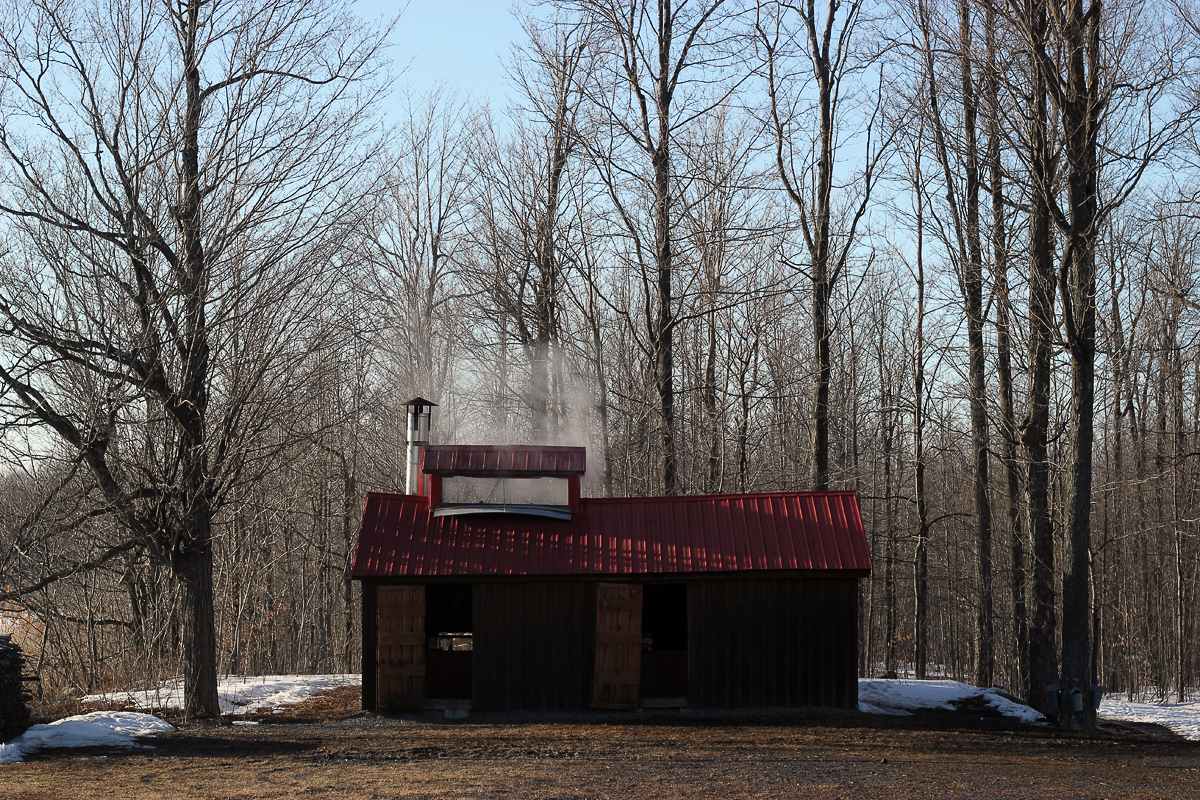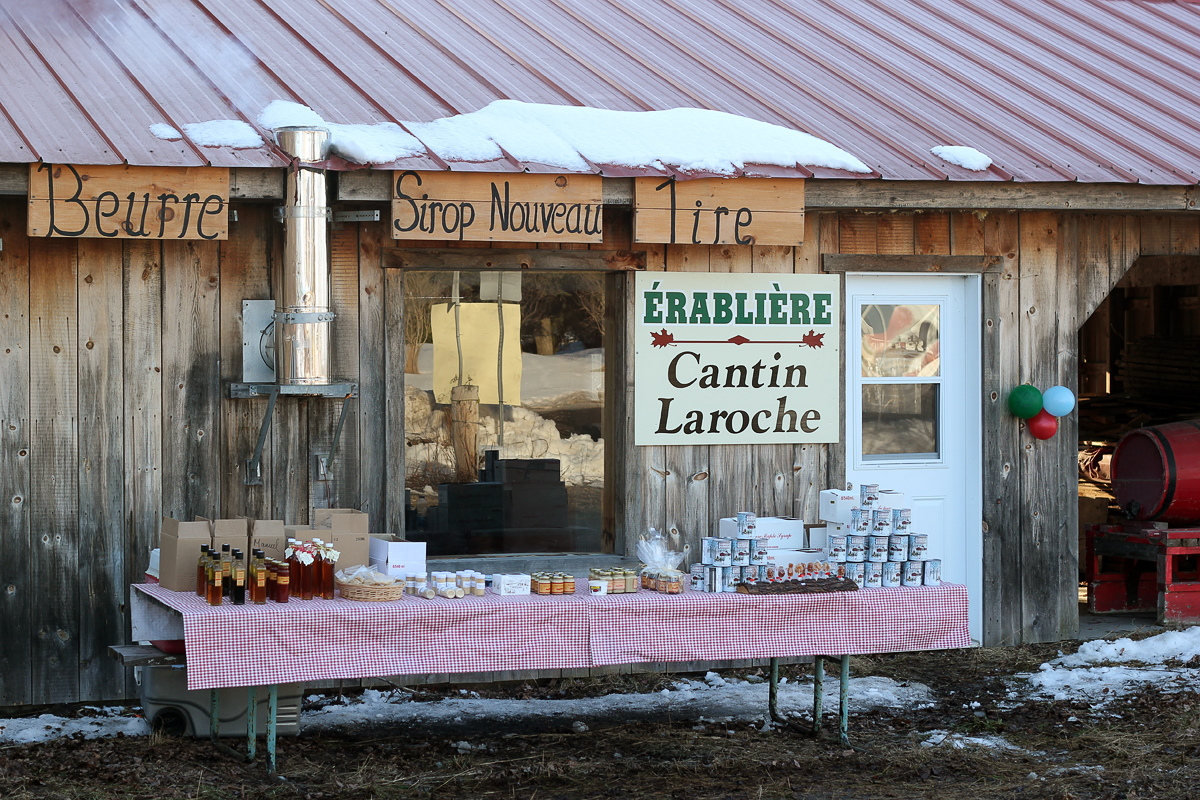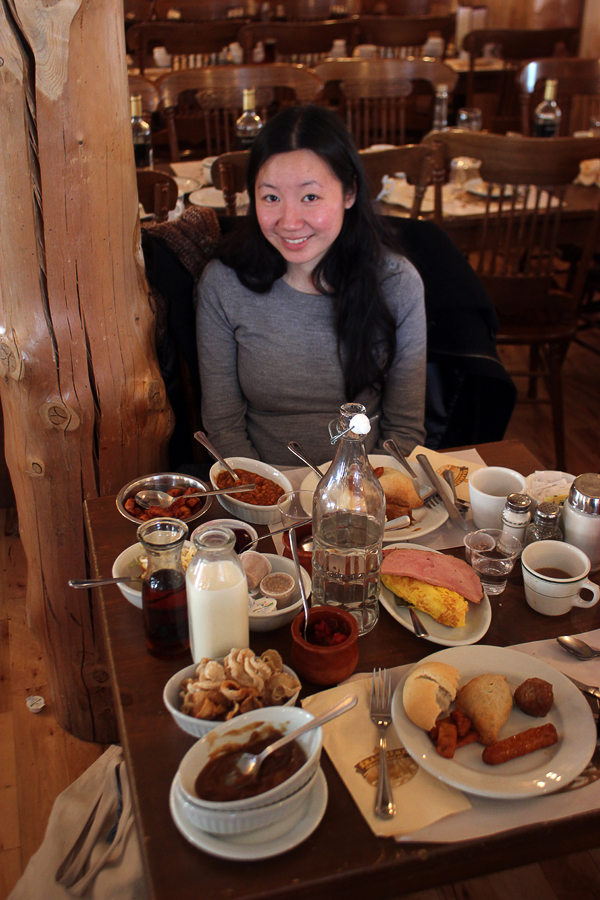It is the beginning of March, which means it's time for all Quebec children to go to the sugar shack. No one who grew up in Quebec recommended that we do that, but we did anyway. The sugar shack is all about two things: maple syrup and heavy food.
Maple sap runs up in the sugar maple trees between the end of February and March. There are two techniques of sap collection that we discovered.
The first is when one drills a hole in the trunk and installs a small pipe with a bucket. Once it is full of sap one needs to come to pick it up.
Sap flow is very slow and it comes out of the trunk in single drops.
Another system involves installing a sap pipeline system. Sap runs downhill through smaller plastic pipes which are connected to bigger pipes which lead the sap to a building with where it is stored and vaporized.
A vaporizer is a huge open bath tub with a stove underneath.
The volume of the sap decreases up to 50 times.
The steam from boiling sap forms interesting patterns in the sunlight.
A few of maple farms are limited to maple production. Some of them are very nice and friendly like this one.
But most of them are not about maple syrup only. The second part of the maple season experience which seems to be a nightmare of grown up Quebecois is the sugar shack meal. I actually found it to be not as bad as I expected.
Yes it is heavy, but it is a light diet compared to Quebec's national dish, poutine. And to my taste it is a lot better. Everything is supposed to be dipped into maple syrup. In the sugar shack we've been to (Érablière Charbonneau) they were pretty nice and they served the syrup separately.
This is the least healthiest dish there. This deep-fried pork fat is called Christ's ears.
Another must-do attraction is snow candies. To make it over-evaporated maple syrup is placed on snow, so one can use a popsicle stick to roll a candy. This candy was actually not that bad.
You cannot miss if you want to know what a Quebec childhood looks like. And you can miss it in any other case. To my opinion, the meal itself is not worth trying, but the sap collection and syrup making is very interesting and a part of traditional life in the Eastern part of North America.

